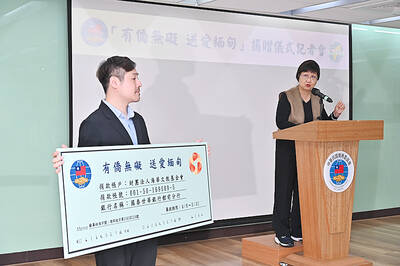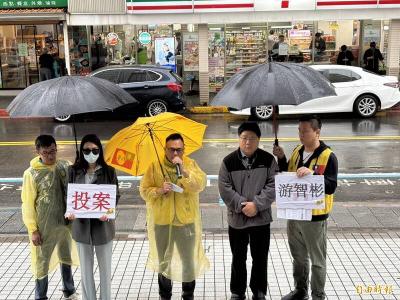The air force will procure the full US$5.2 billion upgrade package for its fleet of F-16A/B fighter jets notified to the US Congress in September last year, but will do so in two phases, the Taipei Times has learned.
This latest twist in the F-16 saga comes after reports in February said that the Executive Yuan had decided it would give the air force only US$3.7 billion to upgrade its 145 F-16A/Bs, forcing the military to trim some of the articles included in the US$5.2 billion package, which includes Active Electronically Scanned Array (AESA) radars, electronic warfare suites, air-to-air missiles and, more controversially, a variety of Joint Direct Attack Munitions (JDAM) kits.
Air Force Command Headquarters announced early last month that it had received an official answer from the US, which reportedly contained articles that reflected the US$3.7 billion allocated by the Executive Yuan.

Photo: Chien Jung-fong, Taipei Times
Taiwan is currently evaluating the contents of the letter and is expected to sign the letter of agreement within 45 to 60 days.
However, a defense industry source told the Taipei Times yesterday that Taiwan would still procure the entire US$5.2 billion upgrade, but would do so in two phases, with the second phase — worth about US$1.5 billion — taking place in two years.
Because the full package has already been notified, no second notification will be necessary for Taiwan to submit a letter of agreement for the second phase, the source said.
The electronic warfare suite is being specifically designed for Taiwan and will not be ready until 2016 or early 2017, the source said, adding that the development cost for the system is part of the retrofit package. The same suite would be installed on the F-16C/Ds that Taiwan has been seeking since 2006.

DEFENSE: The National Security Bureau promised to expand communication and intelligence cooperation with global partners and enhance its strategic analytical skills China has not only increased military exercises and “gray zone” tactics against Taiwan this year, but also continues to recruit military personnel for espionage, the National Security Bureau (NSB) said yesterday in a report to the Legislative Yuan. The bureau submitted the report ahead of NSB Director-General Tsai Ming-yen’s (蔡明彥) appearance before the Foreign and National Defense Committee today. Last year, the Chinese People’s Liberation Army (PLA) conducted “Joint Sword-2024A and B” military exercises targeting Taiwan and carried out 40 combat readiness patrols, the bureau said. In addition, Chinese military aircraft entered Taiwan’s airspace 3,070 times last year, up about

A magnitude 4.3 earthquake struck eastern Taiwan's Hualien County at 8:31am today, according to the Central Weather Administration (CWA). The epicenter of the temblor was located in Hualien County, about 70.3 kilometers south southwest of Hualien County Hall, at a depth of 23.2km, according to the administration. There were no immediate reports of damage resulting from the quake. The earthquake's intensity, which gauges the actual effect of a temblor, was highest in Taitung County, where it measured 3 on Taiwan's 7-tier intensity scale. The quake also measured an intensity of 2 in Hualien and Nantou counties, the CWA said.

The Overseas Community Affairs Council (OCAC) yesterday announced a fundraising campaign to support survivors of the magnitude 7.7 earthquake that struck Myanmar on March 28, with two prayer events scheduled in Taipei and Taichung later this week. “While initial rescue operations have concluded [in Myanmar], many survivors are now facing increasingly difficult living conditions,” OCAC Minister Hsu Chia-ching (徐佳青) told a news conference in Taipei. The fundraising campaign, which runs through May 31, is focused on supporting the reconstruction of damaged overseas compatriot schools, assisting students from Myanmar in Taiwan, and providing essential items, such as drinking water, food and medical supplies,

New Party Deputy Secretary-General You Chih-pin (游智彬) this morning went to the National Immigration Agency (NIA) to “turn himself in” after being notified that he had failed to provide proof of having renounced his Chinese household registration. He was one of more than 10,000 naturalized Taiwanese citizens from China who were informed by the NIA that their Taiwanese citizenship might be revoked if they fail to provide the proof in three months, people familiar with the matter said. You said he has proof that he had renounced his Chinese household registration and demanded the NIA provide proof that he still had Chinese